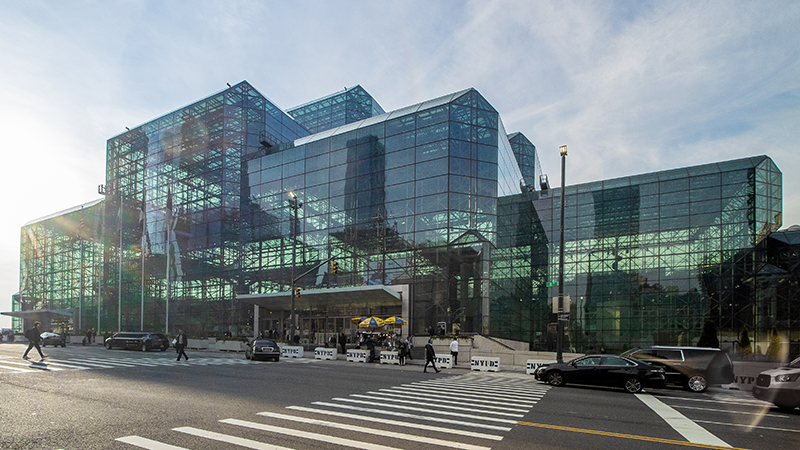Navigating Bird-Friendly Legislation
Bird-safe building laws are expanding, but that means industry members need to stay up-to-date
Clear and reflective glass in commercial and residential structures indiscriminately injures and kills up to one billion wild birds annually in the United States, and between 16 to 42 million in Canada, from window collisions, according to the American Bird Conservancy and the Resilience Alliance. Only during the last decade has significant progress been made to save more birds from window and glass wall collisions through legislation at the federal, state and local level. However, this legislation is often regionally implemented, without consistency, and is challenging for glass and fenestration professionals to track, follow and apply.
As part of its Thirsty Thursday webinar series, National Glass Association code consultant Nick Resetar, Roetzel & Andress, shared updates on existing American and Canadian legislation and ordinances to help navigate the rules around bird-friendly glazing during his “Navigate Legislation for Bird-friendly Glazing” presentation.
“The bird-friendly glazing issue is becoming more pronounced locally, statewide as well as nationally,” says Resetar. “The more the built environment expands, the more we need to talk about how we’re harming birds through building surfaces, why it’s important... and how incorporating bird-friendly design from the beginning is the most cost-effective approach.”
Did you know?
Nearly 1 billion birds are injured or killed by collisions with reflective building surfaces annually in the U.S.
Bird-safe glass legislation
Federal laws like the Migratory Bird Treaty Act in the U.S. and the Migratory Birds Convention Act in Canada, are too broad, and often vague, to be considered effective, says Resetar. In North America, legislation protecting birds from colliding with glass generally comes at three levels.
Federal level
The U.S. reintroduced the bipartisan-supported Bird-Safe Buildings Act in June 2023, which if passed would require the General Services Administration to utilize bird-friendly materials in the construction and retrofitting of its properties. Specifically, the BSBA would require 90% of the exposed façade, from ground level to 40 feet, to be designed and/or comprised of materials to prevent bird collisions, including secondary facades, screens, shutters or bird-friendly glazing.
In Canada, there’s the CSA A460:19 standard that establishes best practices for deterring bird collisions, covers specific bird-friendly building design measures in both new construction and existing buildings, and lists numerous requirements for glazing and integrated structures.
Regional level
U.S. states and Canadian provinces have adopted their own legislation to help protect the wildlife within their territory. California has been a leader in terms of bird collisions, passing Bill AB 454 in 2019. Minnesota’s state-wide Mandatory Bird‐Safe Glazing regulations follow LEED’s Reducing Bird Collisions Program, and Michigan’s Safe Passage Great Lakes Initiative includes bird‐friendly requirements. In January 2022, Illinois introduced its own Bird-Safe Buildings Act, and in 2023, Maryland’s Sustainable Buildings Act requires newly built, acquired or renovated state‐funded buildings to adhere to bird‐friendly window requirements.
The Canadian province of Ontario has the Environmental Protection Act in place, with multiple strategies for minimizing bird collisions.
Municipal level
The number of cities adopting bird-safe laws is growing rapidly. San Francisco was the first major U.S. city to adopt bird-safe legislation, the Standards for Bird-Safe Buildings, in 2011. In recent years, several cities across North America have established mandatory legislation for bird-safe building practices, including New York City’s INT 1482 and Local Law 15 that requires all new construction and major alterations to utilize bird‐friendly glazing in all buildings; Washington, D.C.’s 2022 Migratory Local Wildlife Protection Act that goes into effect in 2024; the Bird Safe Buildings Act in Illinois; and the 2020 city ordinance for Madison, Wisconsin, that requires bird‐friendly glass for new buildings larger than 10,000 square feet, sky bridges, and ground level glass features such as sound walls and glass screens.
Proposed mandatory legislation for bird-safe building practices is also under consideration in major California cities Alameda, Los Angeles, Mountain View, Oakland, Richmond and San Jose, and in Detroit, Michigan; Portland, Oregon; and Highland Park, Illinois. Maine is jumping into the fray as well, releasing its own legislation.
Inspired by Toronto, and its voluntary “Bird Friendly Development Guidelines,” which became mandatory under the “Bird Collision Deterrence” section of the Toronto Green Standard, there are also voluntary bird-friendly guidelines in Calgary, Alberta; Vancouver, British Columbia; and Mississauga, Vaughan and Ottawa, Ontario. And several cities in British Columbia, Nova Scotia, Ontario and Saskatchewan are currently drafting or reviewing bird-friendly regulations.
“Cities are moving faster than the states and federal government,” says Resetar. “As we see proliferation throughout the country, it’s clear to see the number of cities is rapidly expanding, going from voluntary guidelines to mandatory standards.”
Bird-friendly resources

Advocating for bird-friendly buildings
The glass industry established its position on bird-friendly glazing with NGA’s publication of its updated “Bird Friendly Design Guide,” which supports the prescriptive-based approach to bird deterrent markers (2×4 rule), proven to be reliable and effective in reducing the number of bird collisions against glass. In addition to a new section on bird-friendly glazing in NGA’s GANA Glazing Manual, NGA also offers AIA presentations for architects, articles in Glass Magazine, webinars, and a Codes & Standards Help Center for members on bird-friendly glazing topics.
“It’s important to understand that this is not a fad or a blip on the radar,” says Resetar. “This is going to be an ongoing theme. I encourage you to prepare with knowledge, to provide the best advice and products that customers and clients will need to comply with any bird-friendly legislation.”
As a policy priority, NGA also supports and advocates for bird-friendly glazing annually on Capitol Hill with legislative representation and members of the U.S. Environmental Protection Agency and U.S. Department of Energy during Glass & Glazing Advocacy Days in Washington, D.C. NGA even provides a one-page advocacy resource, “Saving Birds with Effective Glass Solutions,” to share with local legislators or other parties.
“Bird-friendly glazing is not just the future, it’s now,” says Resetar. “This is going to be a big issue for years to come and we need to be sure we are positioned to meet the needs of the public. It affects the economy, the environment and people’s well-being.”


